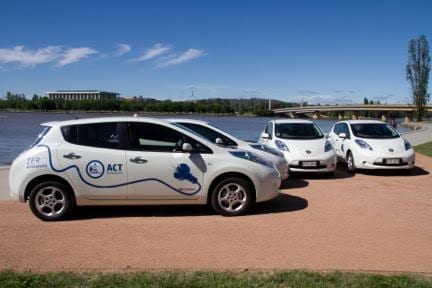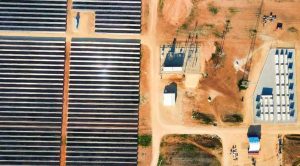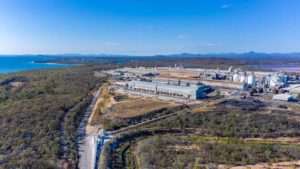The Australian Energy market Operator has effectively doubled its forecast uptake for electric vehicles in Australia, suggesting that within two decades they could account of more than half of Australia’s car fleet.
 This graph above was included in a presentation made to a key working group just a few weeks ago, and highlights the difference between forecasts made at the time of its annual Electricity Statement of Opportunities last September, and its update last month.
This graph above was included in a presentation made to a key working group just a few weeks ago, and highlights the difference between forecasts made at the time of its annual Electricity Statement of Opportunities last September, and its update last month.
The changes are reflected across all three scenarios – weak, neutral and strong – which I guess are based on the availability and cost of EV models, the price of oil, and the consumer shift to distributed energy – rooftop solar, battery storage, and EVs.
The most remarkable difference is in the “strong” scenario. Just six months ago, AEMO was predicting 15,000GWh of consumption from the grid from EVs. Now it is looking at nearly 30,000GWh.
That’s around 15 per cent of total demand on the Australia grid, and to extrapolate the significance of that number from previous predictions, it could mean that AEMO is expecting half the cars on the road in 2037 will be electric.
A report prepared by energy consultancy Energeia last September put the the AEMO’s neutral scenario at the equivalent of 7,200GWh, which represented 2.56 million EVs, of 13.2 per cent vehicles. (See graph below).
This latest update of nearly 30,000GWh suggests that AEMO is now expecting 10 million EVs on the road by 2037 – an average of 500,000 a year between now and then. That would represent more than half the current small car fleet of 18.8 million vehicles.
This is fascinating – both for the implications for the transport sector, and for the electricity sector.
AEMO cares about the uptake of EVs because it represents what is known as the “last load” for the electricity market. In other words, it is about the only thing that will add to demand in the future, apart from population growth.
AEMO needs to understand the uptake both to ensure it has enough supply to meet that demand, to ensure that not all EVs are trying to charge at the same time, and to explore opportunities to use the EV batteries as a service to the grid, to help meet peak demand rather than worsening it.
A week ago Morgan Stanley analysts released a report that suggested if every Australian internal combustion engine (ICE) vehicle to electric, the incremental load would be in the order of 50TWh (50,000Gwh), or 26 per cent of current total demand.
Morgan Stanley noted that the AEMO had previously settled on a “last load” forecast for 2025 of around 2TWh, based on a four per cent take up rate of EVs.
The Morgan Stanley analysts noted that even if 50 per cent of new vehicles sales were EVs (Australia’s new car market is about 1.2 million a year), it would take 30 years for the current fleet of 18.8 million vehicles to convert to EVs.
Now, it seems, AEMO appears to be embracing that sort of scenario, which makes sense, because once the cost of EVs matches that of petrol cars, it will be difficult to think of a rational reason not to go electric.
Indeed, at last week’s Smart Energy Conference, the Beyond Zero Emissions Group was repeating its forecast that the sector could go 100 per cent EVs by 2030, once that transition point on purchasing price had been passed.
And that could happen within a few years, although Australian consumers still suffer from a lack of options – the Tesla Model 3 will not be available for at least another year, the new Nissan Leaf model may not be here until 2019, and only Hyundai’s Ioniqu and Kona may appear this year.
At low levels of uptake, however, there will be little difference to demand on the grid.
Christopher Munnings, from the CSIRO, told the same session at the conference that one million EVs over five years – or about 20 per cent of the new car market – would lift electricity demand by around 1.3 per cent.








